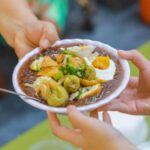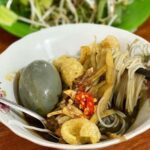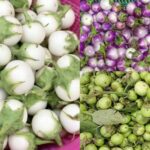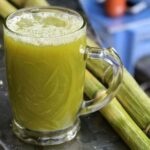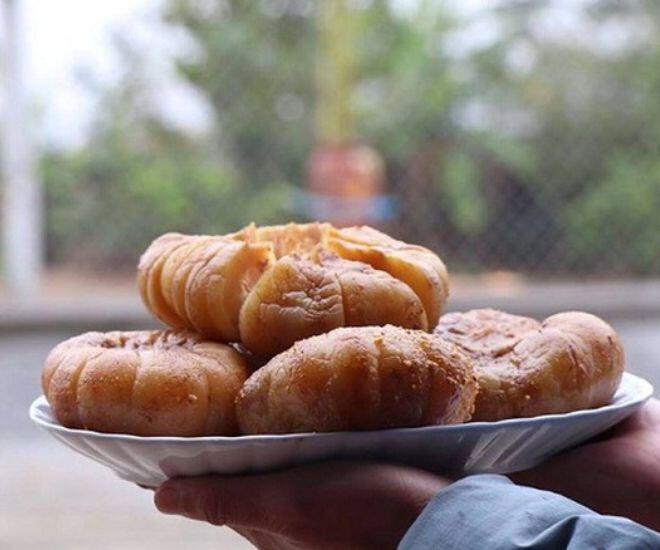
Upon arriving in Hoa Thon (Tam Hiep Commune, Phuc Tho District, Hanoi), visitors are immediately greeted by the distinctive aroma of fermented soybeans wafting through the air. This scent signals the presence of large jars brimming with fermenting soybeans, where the key ingredient, pickled eggplants, undergoes a transformative process. Today, local records indicate that only about 6 households in Tam Hiep Commune specialize in producing these pickled eggplants. Each household annually processes approximately 1.5 to 2 tons of eggplants, generating over 100 million VND in revenue per family.
The pricing of these pickled eggplants remains stable yet varies based on fermentation duration: one-year fermented eggplants range from 25,000 to 30,000 VND per fruit; those weighing between 0.5 to 1 kg can fetch up to 50,000 VND each. Exceptional, long-fermented eggplants command even higher prices. For instance, a 0.5 kg (or “5 lạng”) pickled eggplant can sell for 50,000 VND—ten times its pre-processed value. Remarkably, a 1 kg eggplant can be priced as high as 300,000 VND.
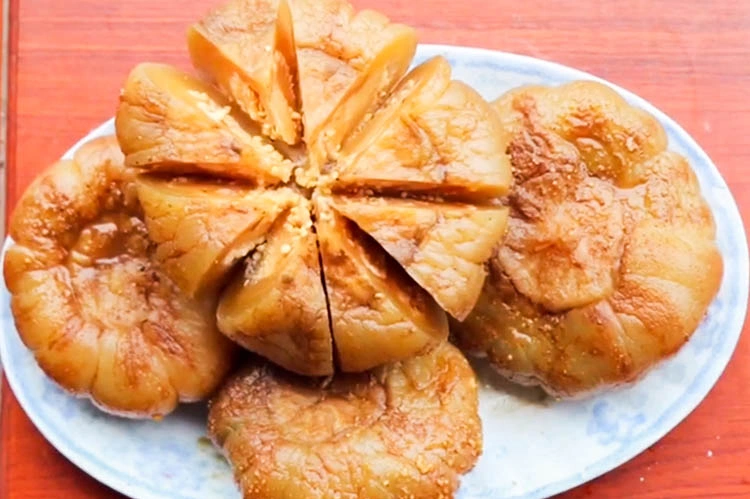
According to village elders, pickled eggplants were once a royal delicacy from Hoa Thon. Today, locals continue to purchase them for family consumption or as gifts. At culinary festivals, Hoa Thon’s pickled eggplants prominently feature in specialty stalls. Many customers from southern regions like Ca Mau place orders for delivery. Vietnamese expatriates from Canada, Japan, Singapore, and the Czech Republic also frequently order these eggplants to take home or send to loved ones.
Currently, producers in Tam Hiep Commune regularly receive dense orders, often leading to stockouts—meaning there are times when demand exceeds supply.
Pickled eggplants are unique in that they rely on a single annual harvest of white eggplants. Local tradition dictates that even the earliest pickled eggplants require at least one year of fermentation before they can be consumed. The longer the eggplants ferment, the richer their flavor and texture become.
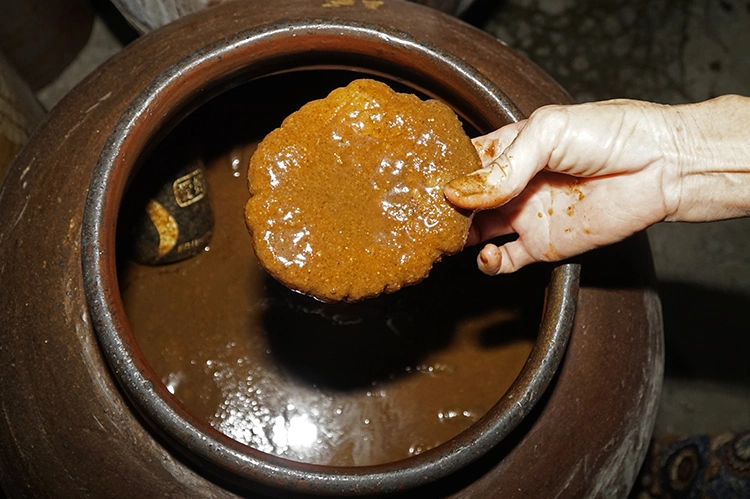
The production process in Hoa Thon adheres to a meticulous traditional method. The primary ingredients are white eggplants and fermented soybeans. White eggplants, known as “bánh tẻ” (neither too ripe nor too young), are harvested early in the morning, weighing between 3 to 6 lạng each, and must be free from defects. Before fermentation, the eggplants are thoroughly washed and salted for 20 to 25 days to reduce moisture.
The soybean fermentation process is equally critical. Glutinous rice is soaked for about 7 hours, mixed with corn flour, and steamed for over an hour. This mixture is then left to mold at room temperature for approximately 6 days to develop a distinctive yeast. Meanwhile, soybeans are selected for their uniformity, freshness, and cleanliness; roasted, ground, and mixed with the mold and salt for further fermentation. Once the soybeans are fully fermented, the eggplants are submerged in the mixture. The fermentation process lasts 3 to 4 months or longer. The longer the eggplants ferment, the more intense their flavor and the crispier their texture.
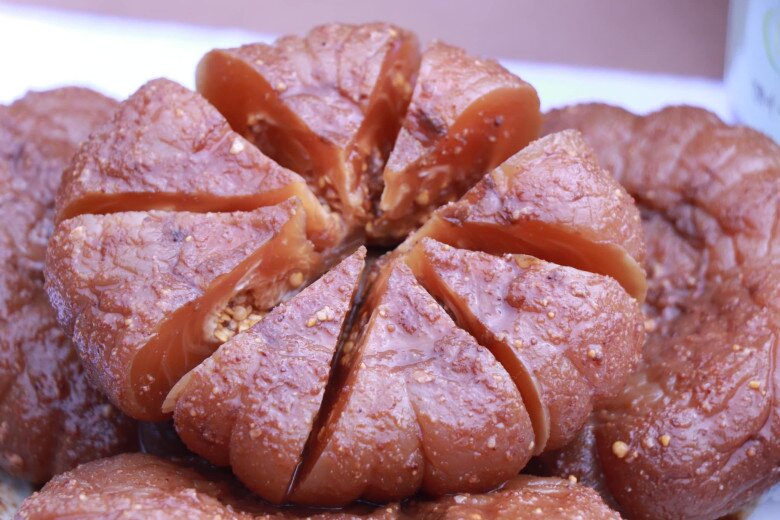
During fermentation, producers must regularly inspect and stir the jars to prevent sedimentation and ensure the eggplants remain fully submerged. Stirring must be done carefully, only in the early morning, as direct sunlight can spoil the mixture, causing sourness or mold. The jars, made of unglazed earthenware, are exposed to sunlight, which is crucial for the fermentation process. Even minor oversights—such as excessive moisture, dryness, or exposure to harsh sunlight—can ruin an entire batch.
A perfectly fermented eggplant retains a golden hue when rinsed, has a pale pink interior when sliced, and remains firm when cut into small pieces. When eaten, it offers a crisp texture and a harmonious blend of salty, sweet, and slightly bitter flavors. To serve, the eggplants are thinly sliced, briefly rinsed in hot water, and tossed with vinegar, garlic, chili, and sugar to balance the flavors. The initial bite reveals a pronounced saltiness, but as you chew, a subtle sweetness lingers on the tongue—a sensation that leaves a lasting impression.
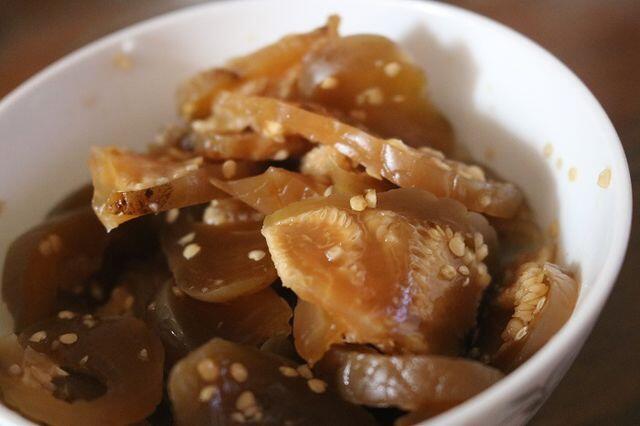
Residents of Hoa Thon emphasize that producing high-quality fermented soybeans requires meticulous care throughout the fermentation period—akin to nurturing a young child. Neglecting factors like humidity, light exposure, stirring, or regular inspections can ruin an entire batch. The fermentation season, spanning from March to October (when sunlight is abundant), is ideal for achieving the best flavor. During intense sunlight, the jars must be covered to protect the fermentation process. In humid, rainy weather, the jars must be tightly sealed to prevent unwanted mold or scum.
Historically, pickled eggplants were primarily made for household use, royal offerings, or gifts. Over the past 20 years, the craft has experienced a strong revival in Hoa Thon.
The reputation of Hoa Thon’s pickled eggplants has spread beyond the province, gaining recognition in Hanoi and other cities. These eggplants are now available in supermarkets, specialty stores, and food festivals.
Savoring Vietnamese Congee with Mung Beans and Pork: A Nostalgic Taste of Hanoi’s Childhood Delicacy
Discover the humble yet unforgettable charm of *cháo đậu cà*, a dish that holds a special place in the hearts of many, especially those from Hanoi. Its simple, rustic flavors evoke a sense of nostalgia, making it a cherished favorite. Join us as we explore the essence of this beloved Vietnamese comfort food!
3 Bad Habits That Turn Eggplants From Superfood to Super-toxic: Uncover the Right Way to Enjoy This Delicious Veggie
“Cà pháo, a versatile vegetable that stars in countless culinary delights, especially the iconic cà pháo muối, a staple in traditional Vietnamese meals. However, unbeknownst to many, improper consumption of this vegetable can lead to potential health hazards. Discover the hidden dangers lurking beneath the enticing flavors of cà pháo and learn how to navigate its consumption safely.”

























